Birdfinding.info ⇒ Highly localized within its remote oceanic range, and rarely found far from known nesting colonies. One of the more accessible sites is Amalau Lookout in American Samoa National Park. In Hawaii, there are significant colonies at Necker and Nihoa, a few pairs at Gardner Pinnacles, sporadic reports from Laysan and Lehua Islet (north of Ni’ihau), and very few records from anywhere else.
Blue Noddy
Anous ceruleus
Tropical archipelagos of the central Pacific.
Mostly resident at and around its nesting islands, where it may breed at any time, but mainly during December-March.
These areas include: in Micronesia, the Marcus, Marshall, and Johnston Islands, the Northwest Chain of Hawaii; and in Polynesia, the Phoenix Islands, Tuvalu, Fiji, Samoa, Kiribati, the Cook Islands, the Society Islands, the Marquesas, and the Tuamotu Archipelago.
The Hawaiian population comprises about 1,000-1,500 pairs at Necker Island, 2,000-2,500 at Nihoa, and fewer than 20 at Gardner Pinnacles. Additional small colonies at Kaula Rock (far south of Ni’ihau) and La Perouse Pinnacle in French Frigate Shoals vanished in the early 1900s and 2000s, respectively.
Identification
The smallest larid. Easily confused with Gray Noddy (see below).
Pale to medium-gray overall but paler on the head, neck, and chest, and whitish on the crown.
Distinctive eye-ring is black in front and white in back.
In flight, the underwing is mostly uniform gray in most populations, but the northern subspecies, saxatalis (sometimes regarded as distinct: “Silver Noddy”) usually shows noticeably paler, whitish wing-linings and contrastingly darker primaries and secondaries.
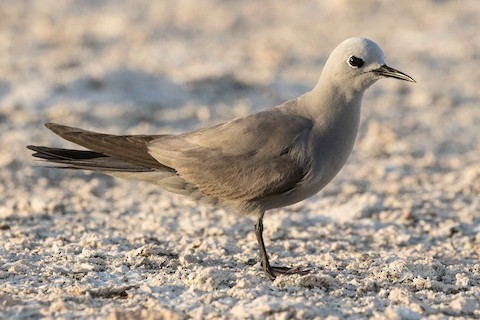
Blue Noddy. (Motu Tapu, Kiritimati, Kiribati; August 16, 2019.) © Eric VanderWerf
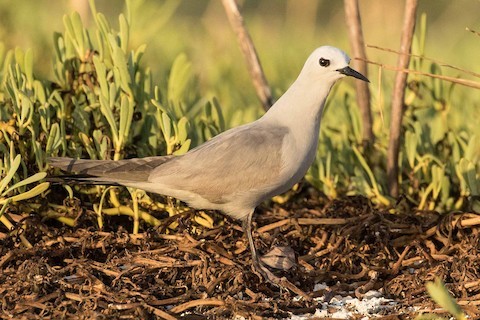
Blue Noddy. (Motu Tapu, Kiritimati, Kiribati; August 16, 2019.) © Eric VanderWerf
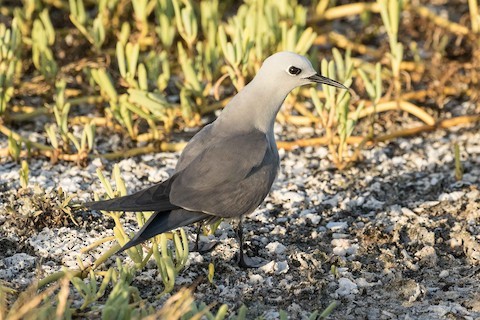
Blue Noddy. (Motu Tapu, Kiritimati, Kiribati; August 16, 2019.) © Eric VanderWerf

Blue Noddy. (Nihoa, Hawaii; September 8, 2011.) © Eric VanderWerf
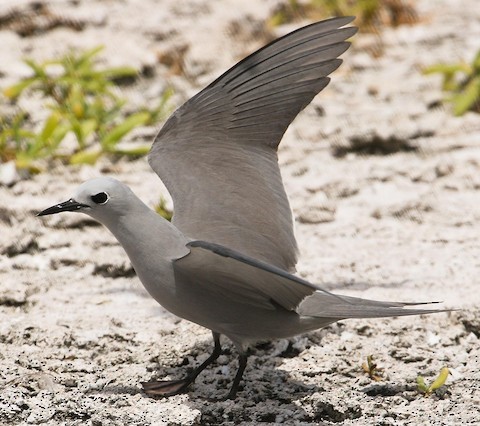
Blue Noddy. (Kiritimati, Kiribati; June 9, 2007.) © Eric VanderWerf
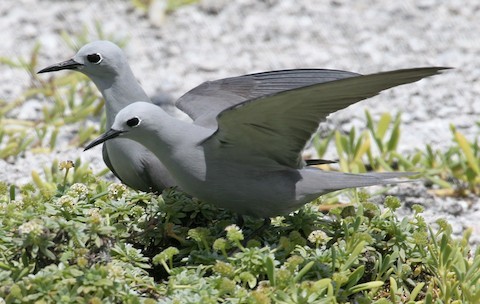
Blue Noddy. (Kiritimati, Kiribati; June 9, 2007.) © Eric VanderWerf
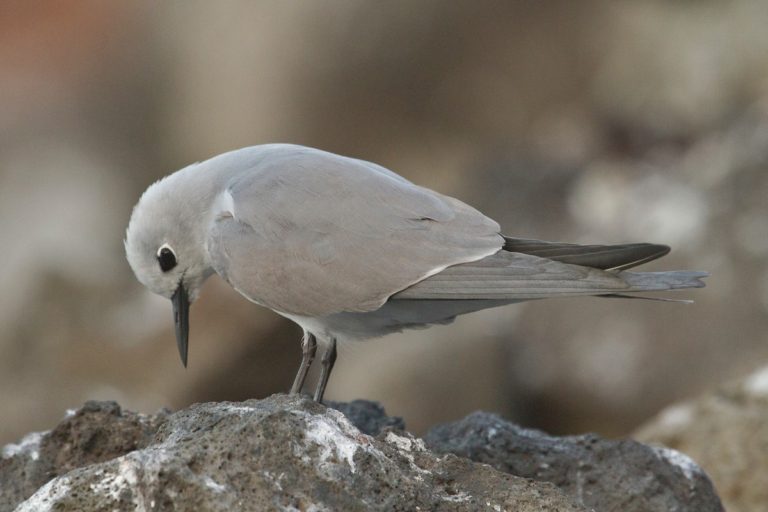
Blue Noddy. (Nihoa, Hawaii; September 8, 2011.) © Eric VanderWerf

Blue Noddy. (Motu Tapu, Kiritimati, Kiribati; August 16, 2019.) © Eric VanderWerf

Blue Noddy. (Motu Tapu, Kiritimati, Kiribati; February 22, 2019.) © George Henry Stirrett

Blue Noddy. (Nihoa, Hawaii; September 8, 2011.) © Eric VanderWerf

Blue Noddy. (Nihoa, Hawaii; August 22, 2016.) © Robby Kohley
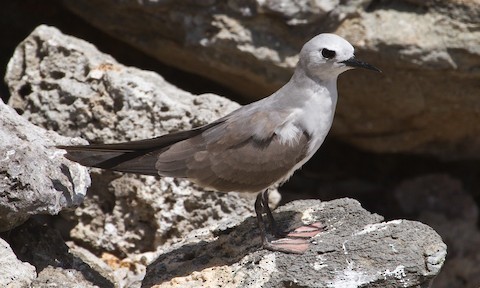
Blue Noddy. (Nihoa, Hawaii; September 8, 2011.) © Eric VanderWerf
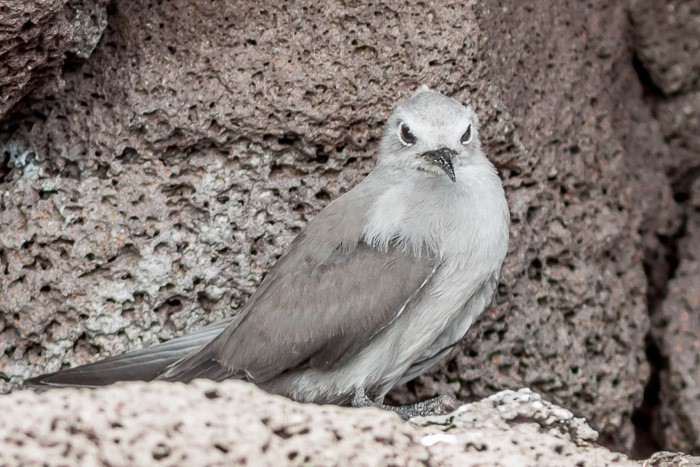
Blue Noddy. (Hatutaa, Marquesas; September 25, 2013.) © David Sargeant
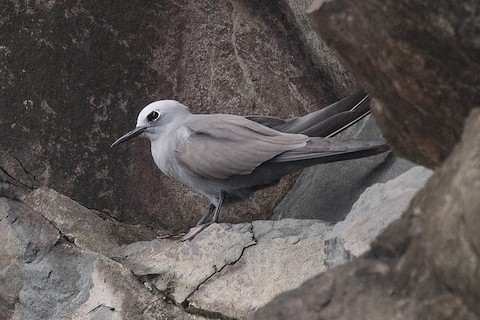
Blue Noddy. (Amalau Lookout, American Samoa National Park, American Samoa; November 5, 2017.) © Eric VanderWerf
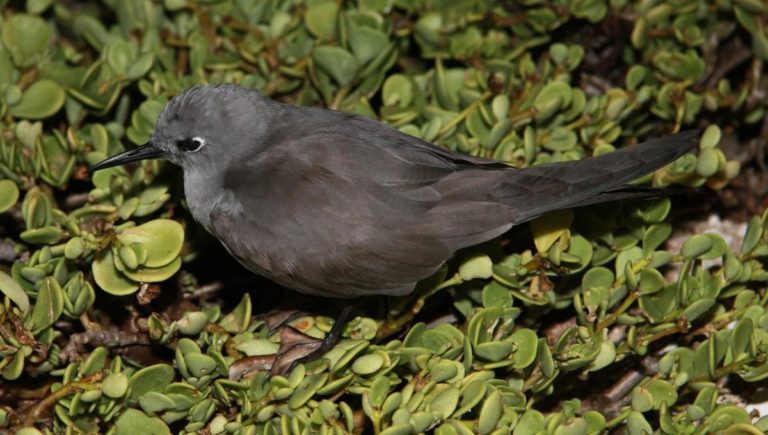
Blue Noddy. (Rawaki, Phoenix Islands; June 2008.) © Mike Thorsen
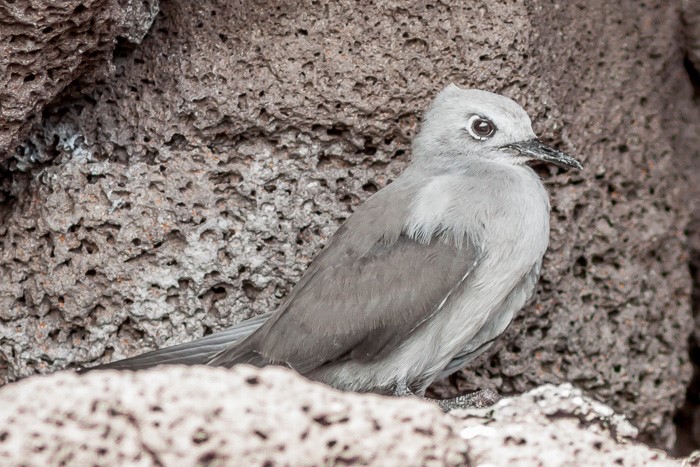
Blue Noddy. (Hatutaa, Marquesas; September 25, 2013.) © David Sargeant
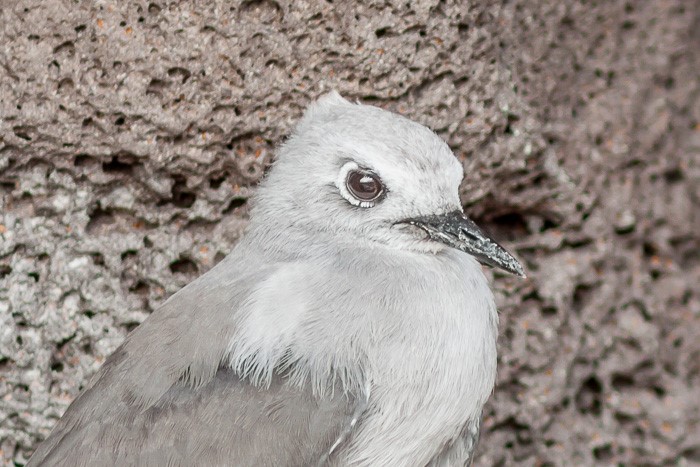
Blue Noddy. (Hatutaa, Marquesas; September 25, 2013.) © David Sargeant

Blue Noddy. (Amalau Lookout, American Samoa National Park, American Samoa; November 5, 2017.) © Eric VanderWerf
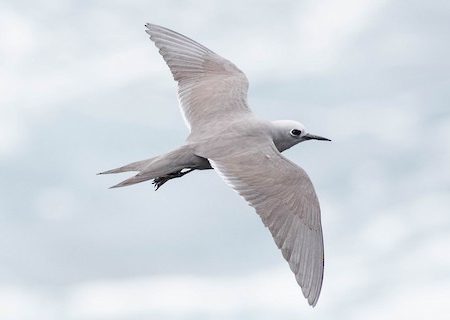
Blue Noddy. (Amalau Lookout, American Samoa National Park, American Samoa; November 5, 2017.) © Eric VanderWerf

Blue Noddy. (Amalau Lookout, American Samoa National Park, American Samoa; November 5, 2017.) © Eric VanderWerf

Blue Noddy. (Northwest Chain, Hawaii.) © Cameron Rutt
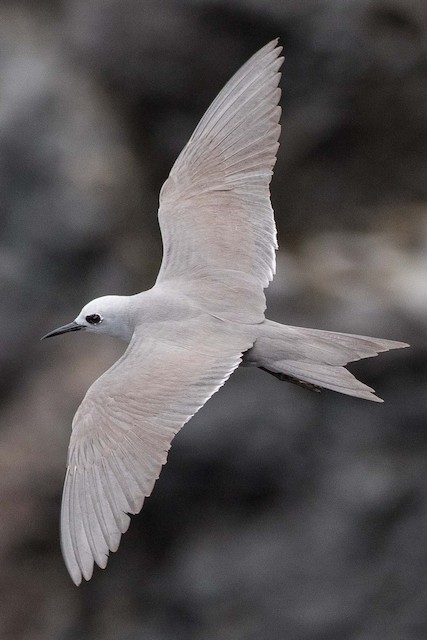
Blue Noddy. (Amalau Lookout, American Samoa National Park, American Samoa; November 5, 2017.) © Eric VanderWerf

Blue Noddy. (Nimroona, Kiritimati, Kiribati; August 15, 2019.) © Eric VanderWerf
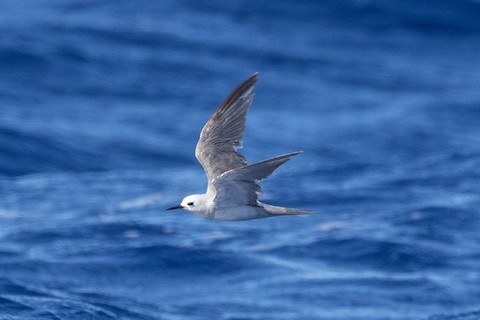
Blue Noddy. (Offshore from Nihoa, Northwest Chain, Hawaii; March 28, 2020.) © Eric VanderWerf
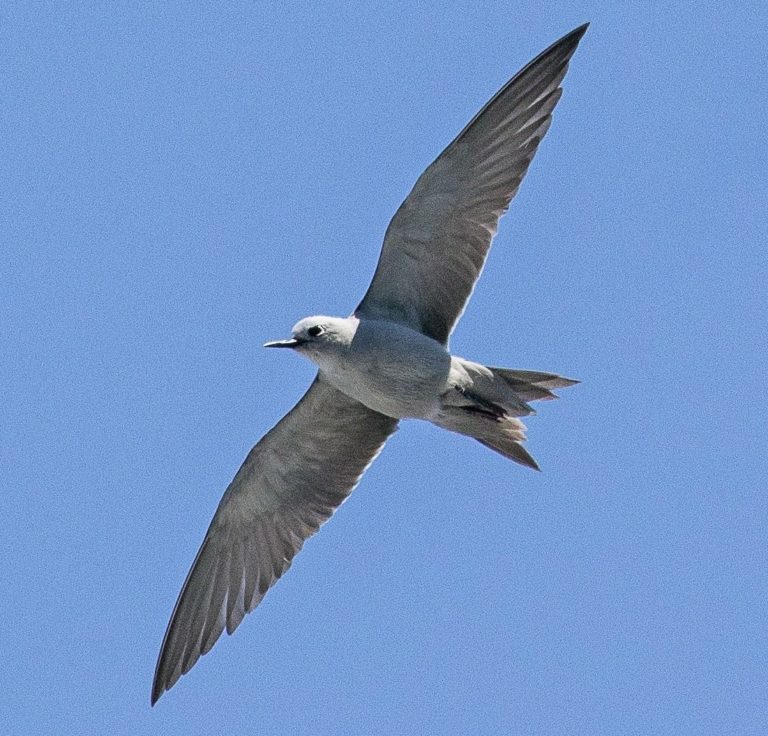
Blue Noddy. (Amalau Lookout, American Samoa National Park, American Samoa; November 4, 2017.) © Eric VanderWerf
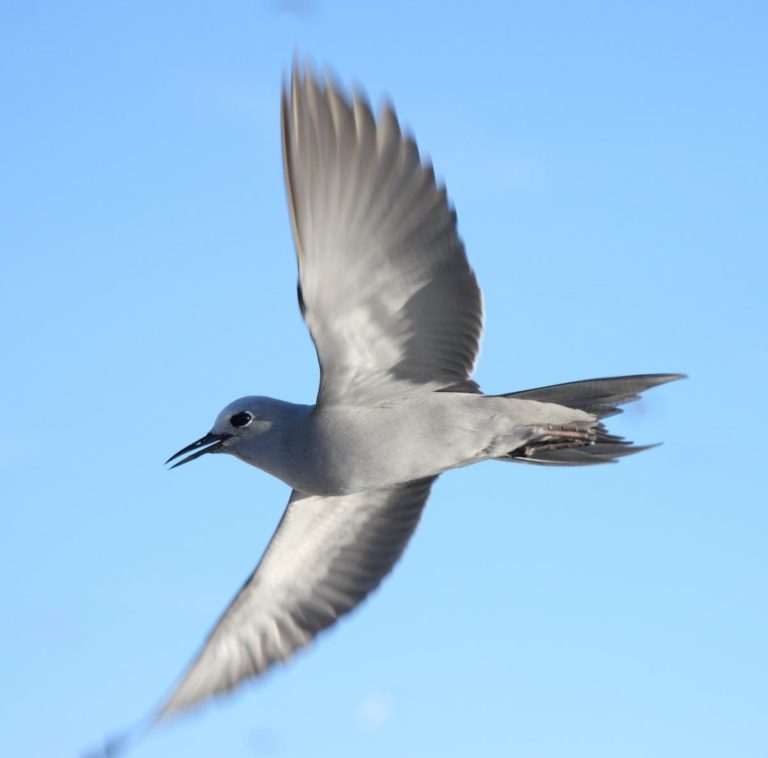
Blue Noddy. (Rawaki, Phoenix Islands; June 2008.) © Mike Thorsen
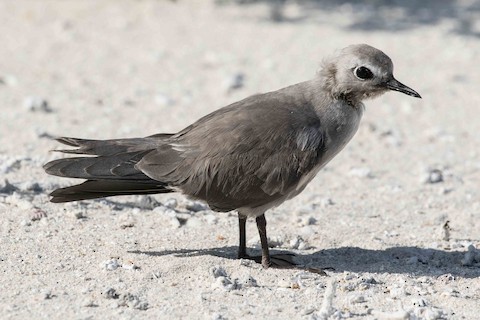
Blue Noddy, juvenile. (Motu Tapu, Kiritimati, Kiribati; August 18, 2019.) © Eric VanderWerf
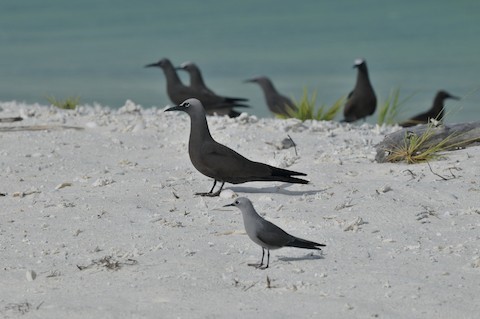
Blue Noddy, in foreground with larger Brown Noddies in background for size comparison. (Motu Tapu, Kiritimati, Kiribati; November 5, 2016.) © John Doty
Cf. Gray Noddy. Blue and Gray Noddies were traditionally considered a single species, the Blue-gray Noddy (A. ceruleus), but have been reclassified as separate based largely on genetic evidence. The differences between them are subtle and variable, and difficult to generalize because of internal variation. The most consistent difference seems to be size, as Gray Noddy is slightly larger than Blue—but not enough to help with field identification.
In areas where they are most likely to overlap (mainly the south-central Pacific), Blue Noddy has more uniform coloration, whereas Gray Noddy shows more noticeable contrast: darker on the upperparts than on the head, neck, and underparts, and with contrast on the underwings between whitish wing-linings and darker flight feathers. Elsewhere, however, the northern subspecies of Blue Noddy (A. c. saxatalis, sometimes “Silver Noddy”) resembles Gray Noddy more than it does other Blue Noddies.
Notes
Polytypic species consisting of five recognized subspecies, one of which could be considered a distinct form: “Silver Noddy” (A. c. saxatilis). Howell and Zufelt (2019) go so far as to recognize saxatilis as a separate species, but the reasons for this subdivision are not self-evident.
Traditionally classified as conspecific with the Gray Noddy (A. albivitta), known collectively as the Blue-gray Noddy (A. ceruleus). The distinctions between them seem slight enough to favor treatment as a single species.
References
BirdLife International. 2018. Anous ceruleus. The IUCN Red List of Threatened Species 2018: e.T22727746A133493654. https://dx.doi.org/10.2305/IUCN.UK.2018-2.RLTS.T22727746A133493654.en. (Accessed November 12, 2020.)
eBird. 2020. eBird: An online database of bird distribution and abundance. Cornell Lab of Ornithology, Ithaca, N.Y. http://www.ebird.org. (Accessed November 12, 2020.)
Harrison, P. 1983. Seabirds: An Identification Guide. Houghton Mifflin, Boston.
Howell, S.N.G., and K. Zufelt. 2019. Oceanic Birds of the World. Princeton University Press.
Pratt, H.D., P.L. Bruner, and D.G. Berrett. 1987. A Field Guide to the Birds of Hawaii and the Tropical Pacific. Princeton University Press.
Pyle, R.L., and P. Pyle. 2017. The Birds of the Hawaiian Islands: Occurrence, History, Distribution, and Status. Version 2 (January 1, 2017). http://hbs.bishopmuseum.org/birds/rlp-monograph/. B.P. Bishop Museum, Honolulu, Hawaii.
Xeno-Canto. 2020. Blue Noddy – Anous ceruleus. https://www.xeno-canto.org/species/Anous-ceruleus. (Accessed November 12, 2020.)

